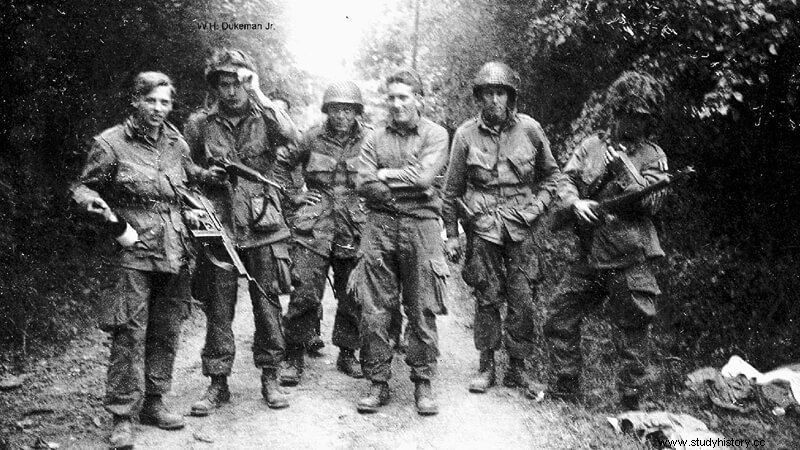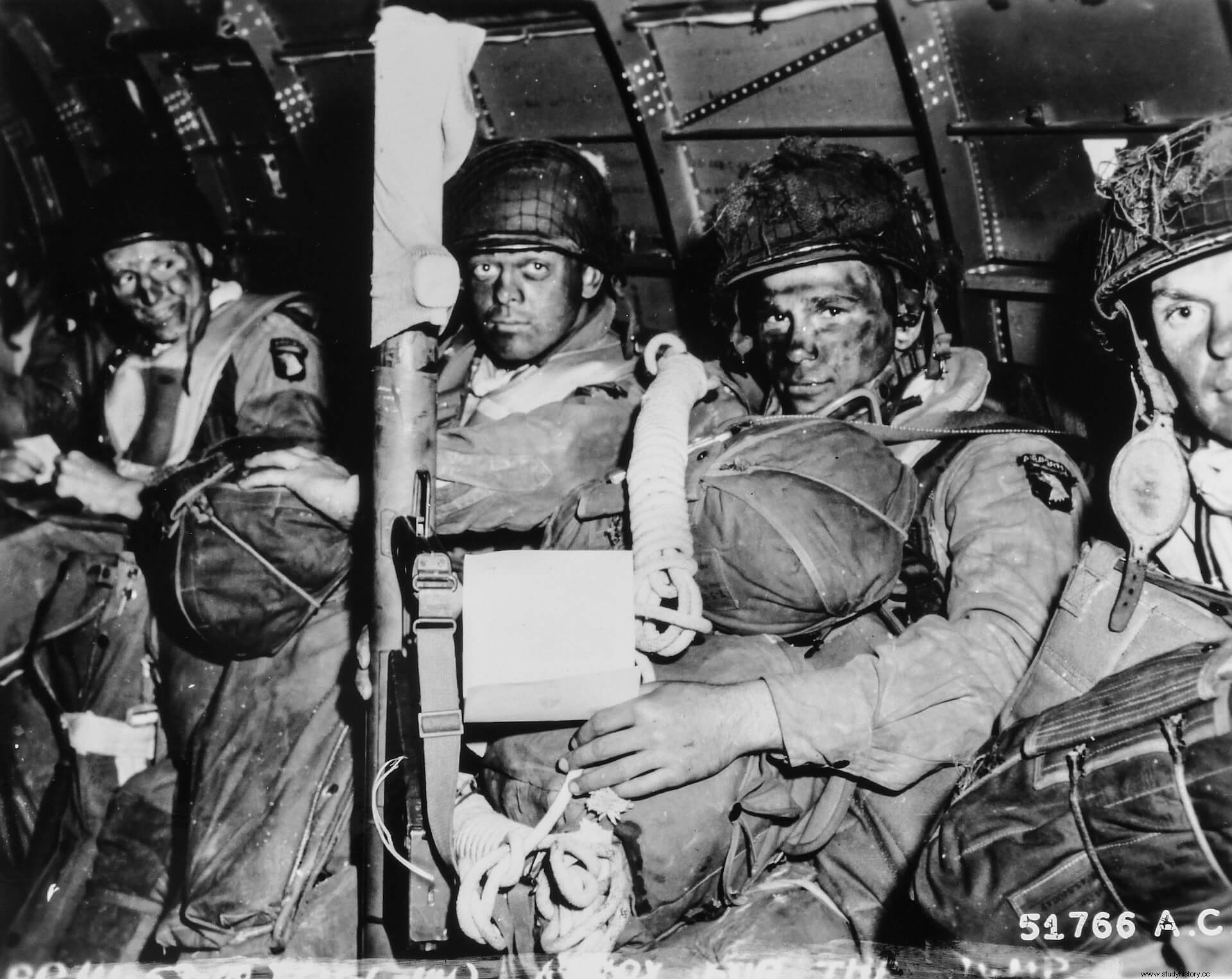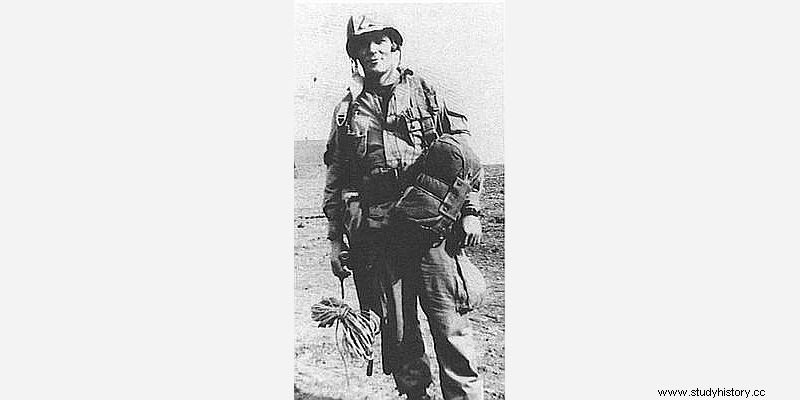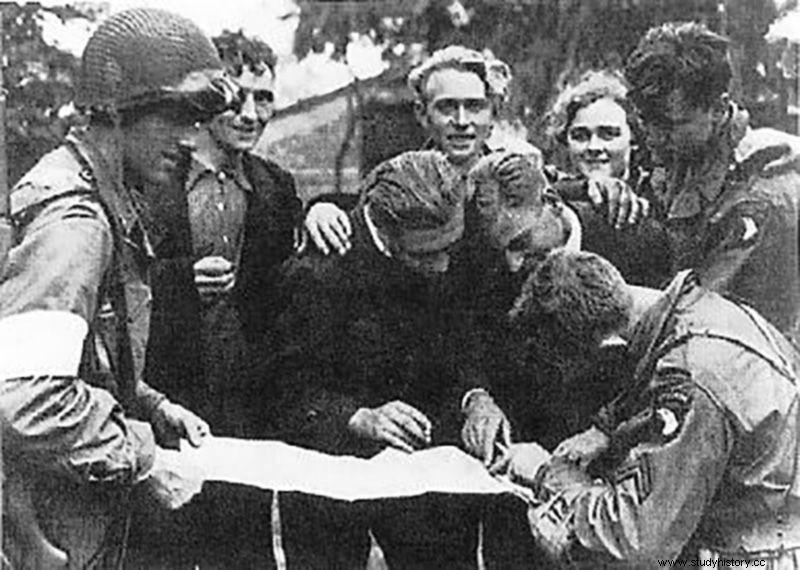
The men of Company E (Easy) of the 506th Parachute Infantry Regiment, who rose to fame thanks to the Band of Brothers , Stephen Ambrose's book, entered combat for the first time during the airborne assault on D-Day. They had trained for it for almost two years, acquiring both physical ability and mental toughness, and familiarizing themselves with weapons. that they were going to use; but they had never shot to kill. All this would change completely in the dark morning of June 6, 1944, and from that moment until the end of the war in Europe, the men of the Easy Company they were to amass an illustrious combat record, immortalized in the 1992 book and the popular HBO series that followed.
Easy Company training and travel
The men of Easy Company were among the first paratrooper trainees to arrive at Camp Toccoa in the mountains of north Georgia in 1942, and soon became familiar with the arduous fitness program, with regular runs and walks to the top of Mount Currahee, 528m above sea level. The motto they adopted was:"Three miles up! Three miles down!", while the regiment to which they belonged took the word "Currahee!" as a war cry, apparently a Native American phrase meaning "stand alone."
On June 1, 1943, the 506th Regiment became part of the 101st Airborne Division and he was transferred to England, where he arrived that fall, to be quartered in various places in the county of Wiltshire. More specifically, Easy Company, which was part of the 2nd Battalion, was quartered at Aldbourne. On this side of the Atlantic, training continued at a brisk pace until, on 5 June 1944, the regiment was mustered at RAF Upottery airfield in East Devon and loaded onto the transport planes that would take them to danger for the first time.

After ascending and beginning the journey, airplanes do not they were soon met by strong winds, low clouds, and German anti-aircraft fire, all of which caused the formation to rapidly disperse. Only 10 of the 81 transports carrying the 506th Regiment managed to drop their paratroopers in the designated area – from approximately 1:00 a.m. – the rest were scattered over several kilometers of Norman territory. More specifically, the 1. er and 2nd Battalions, and with them Easy Company, were to land at drop zone “C” (see “All Americans and Screaming Eagles at Cotentin,” in Desperta Ferro Contemporánea No. 33 ), just south of Boutteville and west of Ste. Marie du Mont, then moved to the southernmost two causeways, or exits, of Utah Beach, where the 4th Infantry Division was to land. These tracks crossed a strip of swampy, low-lying land that extended beyond the beach, and their control was vital for US forces to gain access to the interior of the country throughout D-Day. Within the general framework of this mission, Easy Company –along with a demolitions squad– was ordered to secure exit 2, however, due to aerial confusion, the transports carrying the 2nd Battalion passed over its drop zone and the bulk of it came ashore about 8 km from the intended location.
Regrouping and taking action
Lieutenant Richard “Dick” Winters he washed ashore near Ste. Mère Église and, like many others, was initially unclear where he was. In addition to that, he did not have his rifle, because the air current caused by the propeller of the plane from which he had jumped had snatched the bag full of equipment that he had hanging from his leg, leaving him with only a knife. . Unaware that the company commander, Lieutenant Thomas Meehan, had already died, along with everyone on board, when his plane was hit by anti-aircraft fire, he became the unit's de facto commander when, cautiously , began gathering stray paratroopers around him, some of them belonging to the 82nd Airborne Division . Groping through the darkness, Winters came across a man with two rifles. He was going to ask her for one when he realized that she was shaking so uncontrollably that he just said:“follow me”. Later, as the number of combatants under his command increased, he decided to take a moment to get his bearings. To do this, he stuck his knife in the ground and covered himself with a poncho, in order to be able to observe the map under the flashlight without the light revealing his position, but someone took the knife. He would have to make do with the grenade another soldier gave him until he came across a dead American and claimed his weapon as his own. 
Winters then headed towards the town of Le Grand Chemin, where he expected to find the 2nd Battalion command post, near Exit 2. At the moment, in the small group stumbling after him through the dark, only a dozen men were from his Easy Company. He would recall that:"I was sitting there with my men when an officer came back and said, 'Winters, they want you on the front lines.' When I got there, Captain Clarence Hester turned to me and said, 'There's a fire behind that hedge. Take care of it!’” As Winters would explain, there were no specific instructions regarding the objective, nor was he given clear indications as to what was on the other side of the hedge, but it was obvious that there were artillery firing on the entire exit road 2 and preventing the advance of 4 1st Infantry Division beyond Utah Beach. At approximately 8:30 a.m., he went to reconnoiter the area and found that there was a battery of four German 105mm guns, grouped around a large hamlet known as Brécourt Manor , located 5 km south of Utah Beach and just north of Ste. Marie du Mont. There were also about 130 soldiers manning the network of trenches and machine gun positions that defended the position.
The Battle of Brécourt Manor
Winters ordered two machine guns to contain the enemy fire and ordered three of his men to seize an enemy machine gun by attacking it with grenades and then establish another support position. Then, when he gave the order, the paratroopers opened fire from three directions. As soon as he started to advance he fired at a German who was making his way through the trench. Moving quickly, the paratroopers drove the enemy from their positions by means of a barrage of rifle and machine gun fire, and grenades. As four defenders ran out into the open, Winters and two other men finished them off immediately. Upon reaching the first piece, the young lieutenant realized that he had no explosives and ordered another soldier to retrieve the demolition kit from him. Then he led a group of five men with whom he entered the trenches in search of the second, where he arrived after instantly overcoming the enemies who resisted with her. So the paratroopers moved on to take the third. When the explosives arrived, the Americans stuffed blocks of TNT into the gun tubes and blew them up with German grenades they had found in the defensive position. They had already destroyed three shells when Lieutenant Ronald Spiers of the 506th Company D arrived to successfully lead the assault against the last piece.
One of Lieutenant Spiers's men was also killed, and two other paratroopers were wounded. Under heavy machine-gun fire from the Germans dug in on the farm, Winters ordered a retreat. On the way to the rear he found a map, which he would later give to the intelligence officers, which turned out to be very valuable as it had, well marked, all the machine gun and artillery positions in the area.
About this match, Stephen Ambrose wrote:
In retrospect, some of the participants in the attack on Brécourt Manor recognized that they had taken unnecessary risks during their first combat action. However, despite being few, they executed a coordinated assault that was possible thanks to long days of rigorous training, and solid discipline. This assault is still studied today in military schools as an example of small unit tactics. For his heroism on June 6, 1944, Winters received the Distinguished Service Cross; Three other Easy Company fighters received the Silver Star, and eleven Bronze Stars and three Purple Hearts were also awarded.
On June 7, D+1, the 506th Parachute Infantry Regiment, in coordination with troops from the 501st and 327th Glider Infantry Regiments, drove the Germans out of St. Eat du Mont; and a day later the bloody battle began for the vital communications hub that was the town of Carentan . The Germans abandoned this city on the 11th, but counterattacked on the 13th, only to be defeated. Until the end of the month, Easy Company, along with the rest of the 506th Regiment, held defensive positions south of the town. Like the rest of the 101st Airborne Division, the company remained in combat, in Normandy, well past D-Day until, after more than a month on the front lines, the division was withdrawn to England for rest and replacements.

The unit would fight again during Operation Market-Garden , the airborne invasion of the Netherlands in September, and the Battle of the Bulge in December 1944 and January 1945, to end the war at the Eagle's Nest, Hitler's residence in Bavaria.
